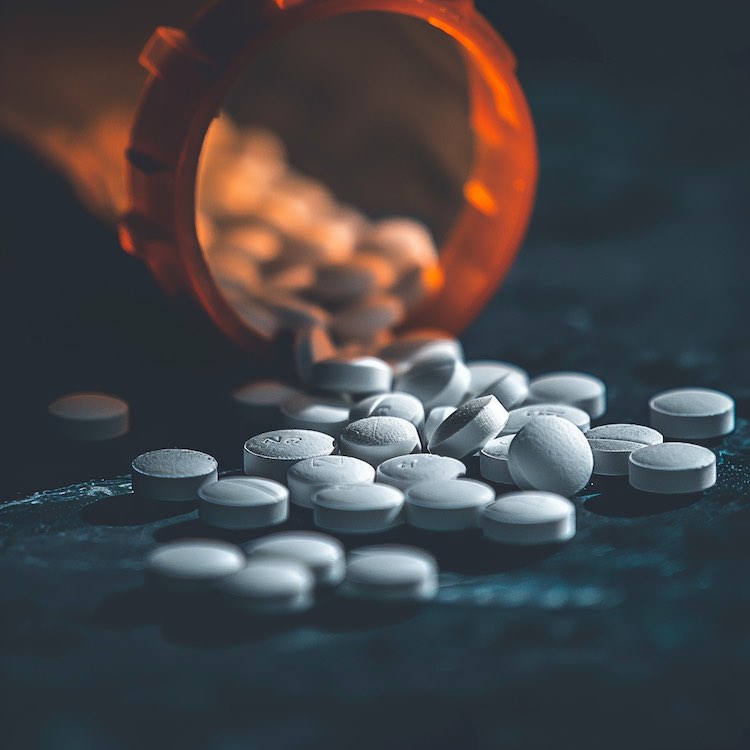Prescription drug abuse represents a serious problem in the United States, and recognizing its signs and symptoms is vital in identifying those who may require assistance. Many individuals misuse prescription drugs with the goal of experiencing euphoria or relaxation, making it essential to stay vigilant for any behavioral changes that could signal a problem.
Prescription medicine abuse entails the misuse of prescription medication, involving its use in ways not recommended by a medical prescriber. This can range from using someone else’s prescription painkiller for personal purposes to snorting or injecting crushed pills for recreational enjoyment. Despite the adverse consequences, prescription drug abuse can become an enduring and compulsive habit.
Most Commonly Abused Prescription Drugs in 2024
Prescription drug abuse is a mounting concern, impacting individuals of all age groups, including teenagers. The most frequently misused prescription drugs are:
- Opioid Painkillers:
- Anti-Anxiety Medications:
- Sedatives:
- Stimulants:
- Methylphenidate (Ritalin)
- Amphetamine/Dextroamphetamine (Adderall)
- Cough Medications:
- Codeine-containing cough syrups
- Promethazine-containing cough syrups
- Muscle Relaxants:
- Carisoprodol (Soma)
- Cyclobenzaprine (Flexeril)
- ADHD Medications:
- Antidepressants:
- Tricyclic antidepressants
- Selective serotonin reuptake inhibitors (SSRIs)
How many people misuse prescription drugs?
Among people aged 12 or older in 2021:
- 5.1% (or about 14.3 million people) reported misusing any prescription psychotherapeutic drug in the past 12 months (2021 DT 1.1).
- 1.3% (or about 3.7 million people) reported misusing prescription stimulants in the past 12 months (2021 DT 1.1).
- 1.7% (or about 4.9 million people) reported misusing prescription tranquilizers or sedatives in the past 12 months (2021 DT 1.1).
- 1.4% (or about 3.9 million people) reported misusing benzodiazepines in the past 12 months (2021 DT 1.1).
- 3.1% (or about 8.7 million people) reported misusing prescription pain relievers in the past 12 months (2021 DT 1.1).
Common Indications and Manifestations of Prescription Drug Dependency
Individuals who engage in prescription drug abuse may exhibit various signs and symptoms, depending on the specific medication involved. Nevertheless, there are consistent examples of physical, behavioral, emotional, cognitive, and psychosocial symptoms that may point to a prescription drug abuse problem.
Behavioral Alterations:
- A shift in behavior is often marked by increased secrecy and withdrawal.
- Frequent use of excuses to conceal their actions.
Physical Transformations:
- Extreme fatigue.
- Reduced appetite or weight loss.
- Flushed skin.
- Slurred speech.
- Heightened agitation or excitability may also be apparent.
Emotional Adjustments:
- Mood swings.
- Depression.
- Anxiety.
- Irritability.
- An inability to effectively cope with everyday stress.
Cognitive Modifications:
- Difficulty concentrating.
- Memory issues.
- Impaired decision-making.
Psychosocial Shifts:
- Alterations in social interactions or relationships.
- Financial difficulties.
- A general decline in overall quality of life.
Causes and Risk Factors for the Abuse of Prescription Drugs
The causes and risk factors contributing to prescription drug abuse are frequently tied to an individual’s mental health, environment, or other predisposing factors. Common factors that contribute to prescription drug abuse include:
- Accessibility: Easy access to highly addictive prescription drugs heightens the risk of misuse and substance abuse. Lack of supervision or monitoring when obtaining medication from a doctor or pharmacy increases the likelihood of misuse.
- Mental Health: Individuals with certain mental health conditions, such as anxiety, depression, or bipolar disorder, may turn to prescription drugs as a coping mechanism for their symptoms. Additionally, those with a history of substance abuse are more susceptible to prescription drug misuse.
- Peer Pressure: Adolescents and young adults are particularly vulnerable to peer pressure regarding drug use. Peer pressure to experiment with prescription drugs for recreational purposes can be strong, increasing the risk of addiction.
- Stress: Excessive stress, whether from work or personal life, can drive individuals to seek relief through prescription drugs, leading to misuse and potentially addiction.
- Genetics: Genetics may play a role in an individual’s susceptibility to substance abuse. Studies suggest that individuals with a family history of addiction are more predisposed to developing addiction themselves.
- Environmental Factors: Environmental factors can also contribute to the risk of prescription drug abuse. These factors include living in a household where substance abuse is normalized, negative peer influences, or easy access to drugs without supervision. Strained relationships with family and friends can also play a role in addiction development.
Additionally, individuals who have experienced trauma may be more inclined to turn to drugs as a coping mechanism.
Prescription Drug Abuse and Co-Occurring Disorders
Individuals struggling with substance abuse often grapple with underlying mental health issues, such as depression, anxiety, or bipolar disorder. For example, someone misusing opioids might also be battling depression. Combining prescription drugs with other substances like alcohol or street drugs elevates the risk of harm and can lead to life-threatening consequences.
Hence, it is crucial for those contending with substance abuse to seek professional assistance. Treatment for co-occurring disorders should encompass both psychological therapy and medication management to ensure a successful recovery.
Seeking Help for Prescription Drug Abuse
When you suspect a loved one is dealing with prescription drug abuse, it’s vital to approach the situation with empathy and understanding.
Treatment for prescription drug abuse focuses on halting drug misuse and aiding individuals in returning to a healthy life. The most effective treatment approaches blend medical, psychological, and social interventions to address the root causes of addiction. This often includes detoxification, medication management, psychotherapy, and group therapy.
To learn more about prescription drug abuse and addiction or our comprehensive range of care, contact our admissions team today.








